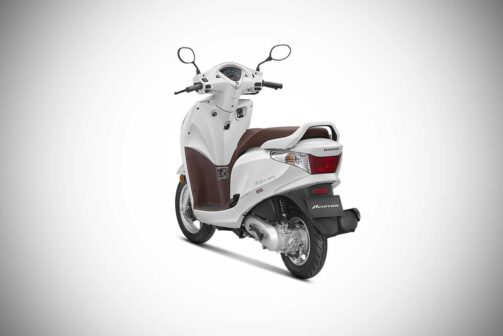When Honda launched the Activa back in 2001, no one would have imagined how successful the scooter would go on to be. Even today, about 1 lakh units of the Activa leave showrooms each month, and it remains one of the best selling two wheelers in the country. The Dio too has been quite successful among the younger audience. However, there is another scooter (or rather, was) produced by Honda which most people seem to forget about. Yes, we are talking about the Aviator.
The Aviator was launched by Honda back in 2008 amidst a lot of hype. Honda had been providing updates to the Activa and Dio, and also concentrated on the Shine and Unicorn motorcycles without any new significant launches for quite a while. Hence, when Honda announced that their next product would be a scooter, there was a lot of buzz going around. There were expectations of an all-new 125cc engine (which sadly did not happen until years later with the Activa 125). Suzuki had decided to go all guns blazing and introduced the Access, which was powered by a 125cc engine. Kinetic too had come up with the 125cc Flyte (which later went on to become the Mahindra Rodeo). The TVS Scooty Pep was not a real threat to Honda, as it was targeted more towards the fairer sex, though it did not have a 125cc engine. However, Honda launched the Aviator, with the same 102cc engine but with some tweaks. It later got a 110cc engine, which was again shared by the Dio and the Activa. The launch of the Aviator also marked the end of the lovable but outdated Eterno.
Honda intended to position the Aviator as a premium, high-end scooter. Even though the Aviator remained virtually unchanged all these years, we feel it still ranks higher than the Activa in terms of looks. It could also, however, be due to the fact that while the Activa is way too common on our roads, the Aviator isn’t. We do like the front-end of the scooter though, with the turn indicators neatly integrated on the front panel instead of being on the handle on either side of the headlamp. The side profile, too, looks quite nice and actually shows you how tall this scooter is, which again is not too common on our roads. The rear section looks just about okay, and the turn indicators flow neatly, connecting to the side panels. However, the 10-inch rear wheel looks puny against the tall front profile. The design of the tail-lamp too is a love it-hate it matter. Overall, Honda did a good job in terms of styling, making sure to not design it as aggressively as the Dio, nor make it as conservative (rather boring) as the Activa. But then again, styling is subjective and you’re entitled to your own opinion on it!
The Aviator also got telescopic forks at the front, and was the only Honda scooter to offer them until the Activa 125 came in. This resulted in the ride quality being so much better on the Aviator than the Activa (which only recently got telescopic forks in its 6G guise). It was a huge relief from the bumpy nature and bounciness of the Activa’s old linkage suspension. The 12-inch front wheel also meant better stability on the road, especially when approaching corners.
So why did Honda pull the plug on the Aviator? For starters, while the Activa and Dio went on to be immensely successful, the Aviator was just a moderate success and was not in the same mould as its siblings. Honda too, did not do much to push sales or to upgrade it into a better product. Unlike its siblings, the Aviator did not receive a major upgrade or even a facelift, and it largely remained the same scooter it was during the time of its launch. With time, the competition evolved and brought in features such as an engine kill switch, dipper button, external fuel-filler, digital meter, tachometer, bluetooth connectivity, navigation, front charging socket etc. Honda provided none of these on the Aviator, and as a result it got completely outclassed.
Besides, by this time Honda had added the Activa 125 and Grazia (which has now been replaced by the Dio 125) in its product range. The launch of the Activa 6G too played a part in the Aviator’s impending death. The 6G finally got telescopic forks, an engine kill switch, external fuel-filler, fuel-injection and a 12-inch front wheel.
Not too long ago, Honda dropped the ‘G’ suffix and rebranded its scooter as simply the Activa. Even the current Activa misses out on a digital instrument cluster, which is strange because the Activa 5G had a semi-digital instrument cluster on offer. It also still misses out on a front disc brake, which was available on the Aviator.
All of this coupled with a price of approximately Rs 89,000 on-road meant that there was no sense for Honda to upgrade the Aviator to BS6. Ultimately, the manufacturer with the winged logo decided to clip the wings of a product which failed to fly to the heights of its siblings.


















